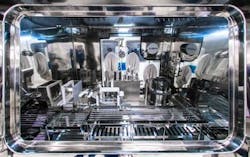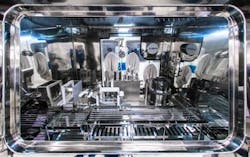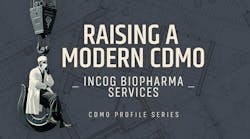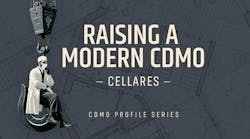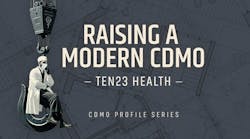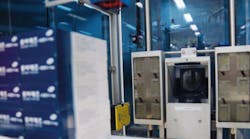BSM put together existing technology to create a novel isolator system can fill vials, syringes and cartridges in a variety of sizes.
When Shawn Kinney and his team launched Berkshire Sterile Manufacturing (BSM) in 2014, the aim was to tap into a sector of the industry they felt was underserved — clinical-scale and small volume commercial sterile products. But the Massachusetts-based contract manufacturer also had a trick up its sleeve: a first-of-its-kind process for flexible, isolator-based sterile manufacturing.
BSM didn’t have to develop a new type of equipment to achieve what no other company had before. Instead, they reinvented the process and put existing technologies together in an entirely new way. Ultimately, they created a system of sterile isolators that can fill vials, syringes and cartridges in a variety of sizes, and lyophilization that can be validated with three initial media fills and just one run to revalidate every six months.
“Traditionally you had different machines that filled the different drug delivery systems — vials, syringes, etc. — which increased capital and validation costs,” Kinney, now president and CEO of the company, explains. “Our system has a higher utilization rate…and can decrease the validation costs because it’s so flexible.”
By catering to a niche in the market — most of BSM’s clients have small volume needs — and using its unique system as the backbone of the company’s manufacturing process, BSM’s business has quickly taken off.
HOW IT WORKS
According to Kinney, BSM’s semi-automated line consists of four connected isolators that each serve a specific purpose.
In the first isolator, the glass component is introduced and can be entered ready to use (RTU) through a restricted access barrier system (RABS), or bulk glass vials are washed and passed through a depyrogenation oven and unloaded into the first isolator.
In the second isolator, a flexible Colanar XY filling system can switch between various sizes of vials, syringes and cartridges through a simple change in parts. “The filler also has the capability to perform headspace evacuation of vials and purging with nitrogen before stoppering, allowing oxygen levels as low as 0.3 percent to be achieved in vials,” Kinney explains.
The third isolator receives the filled and stoppered vials, syringes and cartridges in trays or nests. Sealed containers of syringes or cartridges exit through a mousehole to a RABS. Stoppered vials are denested and passed into a RABS where they are capped with a Genesis capper.
The fourth isolator receives vials that require lyophilization. These vials are passed directly into the lyophilizer. After lyophilization the vials are unloaded into the fourth isolator and exit through the third isolator and finally through the RABS for capping.
“Due to the fact that all the operations take place within an isolator, the sterility assurance level is very high and we see this in the filling and post-filling microbiological monitoring,” Kinney says.
In order to build its unique system, BSM coordinated with different suppliers to integrate the equipment needed with the right specifications.
“A lot of people in the industry are now asking, ‘Why didn’t we do it?’” Kinney says of BSM’s novel system.
THE PAY OFF
BSM posted its first sales in 2016. Sales have doubled every year since and the company expects a more than 60 percent increase this year. BSM also plans to grow its workforce by about 40 percent in 2019.
The company’s largest business segment is protein-based biotech products.
“With the growth of the biotech industry, these products are becoming more significant,” Kinney says.
Although the bulk of BSM’s clients are in clinical trials, some of these companies are planning to go commercial, and BSM has plans to scale up its capacity in tandem with its customers’ needs. BSM could also soon expand into other niche areas such as small-volume batches of personalized medicines.
“We are also evaluating the installation of a completely separate negative pressure cleanroom with a sealed negative pressure isolator for the manufacture of cytotoxic drug products,” Kinney says.
Ultimately, Kinney says the company has successfully achieved what it set out to do with its isolator system, and plans to “stay on the cutting edge of small, scale clinical and commercial operations.”
